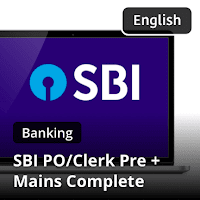Reasoning ability Quiz For LIC AAO 2019
Directions (1-5): These questions are based on the following arrangement. Study it carefully and answer the questions.
B I @ R 1 Q ¬ L E 2 K $ U 5 9 H % 3 7 T A 4 # 6
Q1. Which element is fifth to the right of fifteenth from the right end?
Q
9
L
1
None of these
Q2. Four of the following five are alike in a certain way based on their positions in the above arrangement and so form a group. Which is the one that does not belong to the group?
3T7
6IB
EK2
2$K
U95
Q3. How many such symbols are in the above arrangement each of which is immediately followed by a number but not immediately preceded by another number?
None
One
Two
Three
Four
Q4. If all the symbols are dropped from the above arrangement which element will be ninth from the left end?
B
6
4
K
None of these
Q5. What will come in place of the question mark in the following series based on the above arrangement?
B@I QL¬ KU$ ?
H%3
H3%
R1@
Q¬I
None of these
Directions (6-10): Read the following information carefully and answer the questions given below:
Twelve people are sitting in two parallel rows containing six people. In row 1 – A, I, G, K, E and C are seated (but not necessarily in the same order) and all of them are facing south. In row 2 – L, H, D, J, B and F are seated (but not necessarily in the same order) and all of them are facing North. Each member seated in one row faces another member of the other row.
E sits 2nd to the right of C and doesn’t faces J. A sit at one of the ends and diagonally opposite to B. Three persons sit between B and F, who does not face G . J sits immediate left to D but does not faces C. Two persons sit between I and G, none of them sits at the end. The one who faces K sits 2nd right to L.
Q6. Who among the following faces C?
G
K
I
A
none of these
Solution:
Q7. How many persons sit to the right of H?
No One
one
two
three
four
Solution:
Q8. Four of the following five form a group ,who among the following does not belongs to that group?
B
K
C
A
L
Solution:
Q9. If in a certain way A is related to J, K is related to H, then who among the following is related to D?
G
K
H
F
I
Solution:
Q10. Who among the following sit 3rd right to K?
A
K
E
C
No one
Solution:
Directions (11-15): In these questions, relationship between different elements is shown in the statements. These statements are followed by two conclusions.
Mark answer as
Q11. Statements: A > B ≥ C ≥ D < E; D = M > O
Conclusions: I. E > O
II. A ≥ D
If only conclusion I follows.
If only conclusion II follows.
If either conclusion I or II follows.
If neither conclusion I nor II follows.
If both conclusions I and II follow.
Solution:
I. E > O(True) II. A ≥ D(False)
Q12. Statements: X > Y < Z < O > P
Conclusions: I. O > Y
II. X > P
If only conclusion I follows.
If only conclusion II follows.
If either conclusion I or II follows.
If neither conclusion I nor II follows.
If both conclusions I and II follow.
Solution:
I. O > Y(True) II. X > P(False)
Q13. Statements: L < M < T ≤ Q < R > S ; Q > P
Conclusions: I. P < S
II. P ≥ S
If only conclusion I follows.
If only conclusion II follows.
If either conclusion I or II follows.
If neither conclusion I nor II follows.
If both conclusions I and II follow.
Solution:
I. P < S (False) II. P ≥ S(False)
Q14. Statements: J > A ≤ C ≥ K > E > T
Conclusions: I. A > T
II. J > C
If only conclusion I follows.
If only conclusion II follows.
If either conclusion I or II follows.
If neither conclusion I nor II follows.
If both conclusions I and II follow.
Solution:
I. A > T(False) II. J > C(False)
Q15. Statements: N ≥ A = T > S ; J < R > T
Conclusions: I. N > S
II. J < S
If only conclusion I follows.
If only conclusion II follows.
If either conclusion I or II follows.
If neither conclusion I nor II follows.
If both conclusions I and II follow.
Solution:
I. N > S (True) II. J < S(False)
- Check the Study related Articles Here
- Study Notes for All Banking Exams 2018
- Bankers Adda Daily Questions for SBI PO, IBPS PO Clerk & Bank Exams




 Reasoning Quiz For Bank Foundation 2024 ...
Reasoning Quiz For Bank Foundation 2024 ...
 Reasoning Quiz For Bank Foundation 2024 ...
Reasoning Quiz For Bank Foundation 2024 ...



